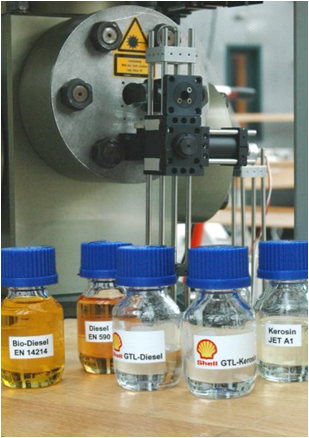ignition of synthetic fuels

Liquid fuels such as diesel and kerosene can be synthetically produced from coal (CTL, coal-to-liquid), from natural gas (GTL, gas-to-liquid) or from biomass (BTL, biomass-to-liquid). Due to the chemical process, CTL, GTL and BTL are chemically identic and can only be identified by determining the age of the carbon source through the c14-method.
BTL-fuels are of particular interest as they are based upon non-specific biomass and may thus not interact with the mankind´s need for food nor are difficulties through large monocultures implied. BTL-fuels may thus be an interesting option to supplement fossil fuels where liquid fuels cannot be replaced as in aeronautics.
In ground-based and microgravity experiments the autoignition properties of single droplets of BTL-diesel and kerosene are investigated over a large temperature and pressure range. The results are compared with those of the related fossil fuels and the output may serve application industry in developing optimized combustion strategies in terms of high efficiency and low pollutant formation rate.
The related projects are supported by the German Aerospace Center, DLR and the European Space Agency, ESA


 "
"